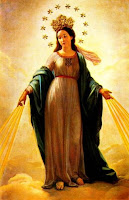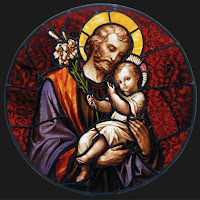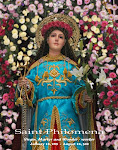Today, Jesus, together with Peter, James, and John, ascend a mountain in order to pray. However, this time, Jesus is no longer shown as one who was weakened by hunger. Rather, he was transfigured before his disciples: his face became as radiant as the sun, his clothing dazzlingly white, Moses and Elijah conversed with him, a shining cloud covered him, and again, the voice of the Father attests to his disciples: “This is my Son, my Chosen One. Listen to him.” This prayer on the mountain became a moment of revelation for both the prophets and the apostles for they have seen Jesus in a way both groups have never seen before. The prophets saw Jesus in his humanity. The apostles saw Jesus in his divinity. The deacon St. Ephraem said: “The prophets were filled with joy, and the apostles likewise, in their ascent of the mountain. The prophets rejoiced because they have seen His humanity, which they had not known. And the apostles rejoiced because they had seen the glory of the Divinity, which they had not known. And when they heard the voice of the Father, giving testimony to the Son, they learnt through this that which till now had been obscure to them: that humanity had been assumed by Him. And together with the Father’s voice, the glory of His own body gave testimony to Him, shining resplendent because of That within Him which partakes of the Divinity.” The Father revealed Jesus to both prophets and apostles. And no one could have done it more fittingly because “No one knows the Son except the Father.” And what the Father revealed about his Son brought delight to both prophets and apostles. He delighted the prophets by fulfilling their prophecies. He fortified the apostles with a vision of His Divinity in preparation for the things that are to take place in Jerusalem. The devil took Jesus up on a mountain to show him the kingdoms which he pretended to own. Jesus took his apostles on the mountain “that he might show them His kingdom, before they witnessed His suffering and death; and His glory before His ignominy; so that when He was made a prisoner, and condemned by the Jews, they might understand that He was crucified by them not because of His own powerlessness, but because it had pleased Him of His goodness to suffer for the salvation of the world. He brought them up to the mountain that He might show them before His resurrection, the glory of His divinity, so that when He had risen from the dead they might then know that He had not received this glory as the reward of his labors, but that he had had it from all eternity, together with the Father and the Holy Spirit.”
What he revealed to both prophets and apostles, he reveals to us today. And what we have received should likewise delight our hearts for now, we have been given the assurance that we are not mistaken in abandoning our former ways in order to follow the Lord. We have done well to turn our backs on a path that led to destruction in order to follow a path that leads to salvation. In the 2nd reading, St. Paul reminds us of the futility of our former ways: “Many conduct themselves as enemies of the cross of Christ. Their end is destruction. Their god is their stomach; their glory is their shame. Their minds are occupied with earthly things.” The transfiguration assures us that all will be well with us who have so decided to follow Christ on this difficult way of the Cross: “Our citizenship is in heaven, and from it we also await a savior, the Lord Jesus Christ. He will change our lowly body to conform with his glorified body by the power that enables him also to bring all things into subjection to himself.” With this assurance, let us heed the command of the Father: “This is my Son, my Chosen One. Listen to him.” Inasmuch as in him is found the fullness of life, let us deny ourselves. Let us carry our cross. Let us follow him. “In this way, stand firm in the Lord.”






















